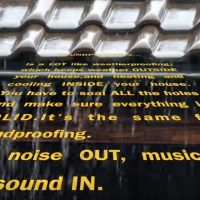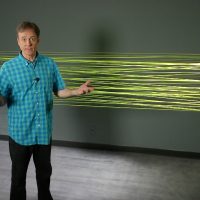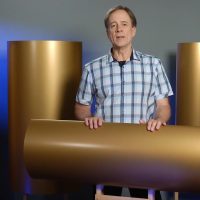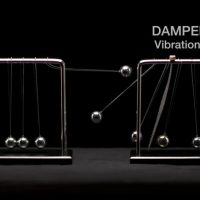Acoustic Panels – What & Where (AcoGeo)
Acoustic Panels – What & Where (AcoGeo) Video Transcript
Hi, I’m John Calder of Acoustic Geometry. We talk with thousands of people about Acoustic Panels, and they all ask us “What and Where?”
So what are acoustic panels? There are two types: absorbers and diffusors, and they’re both important to improving the sound of your room.
We’ll start by finding the First Reflection Points, which are simply the places sound bounces after leaving your speakers on the way to your ears.
First Reflection Points have the first and worst effect on sound and rooms. I’ll use my nerf gun to find my first reflection point on this wall.
Of course, you may not want to find your First Reflection Points like this.
So here’s an easier way. Get a handheld mirror, and an assistant.
Slide the mirror along the wall until your assistant sees the speaker’s tweeter. Mark that spot with painter’s tape, then repeat on the other side
Now you’ve marked your First Reflection Points on the walls. Which panels go there? Lots of people put absorber panels at their First Reflection Points, and that’s okay.
But a better option to use our Medium Curve Diffusors in those pesky First Reflection Points. It’ll make your stereo sound stage wider and more focused, because our diffusors are phase coherent.
Flat surface reflections happen on all four walls, so let’s place one small curve diffusor on the back wall and one on the front wall. We’ve mounted the front wall diffusor horizontally because sound moves in three dimensions and it fits with the TV.
Because corners make sound bounces worse, we’ll use a fabric-wrapped absorber panel in each corner. Two in front reduce side-to-side reflections, and two in back reduce front-to-back reflections.
That’s it for the basics. These eight acoustic panels will definitely improve the sound of your room and might be all you need.
All rooms are different, and your room may need more sound control. So let’s look at the next group of treatments.
The ceiling is a flat surface area and should be treated. Ceiling absorber panels are called clouds. Two are placed at the ceiling First Reflection Points, and two over your seating area,
or you could use our Silk Metal Absorbing Tiles if you have a drop-in ceiling grid. These are cutting-edge microperf technology.
We’re also adding a fabric-wrapped absorber panel in each corner, further reducing corner sound problems.
And we’ll add one more Medium Curve Diffusor on each side at right angles to your seating position, which is where the most annoying flutter echoes occur. And that completes our first two groups of acoustic treatments.
There’s one more group of improvements, if needed. Place a horizontally-mounted small curve diffusor between each of the 2 sets of side-wall Medium Curves.
And place our curve corner traps in any two of your corners. You can also add 2 to 4 more clouds.
As you can see, you don’t need to treat every square foot to have great acoustics. Remember: your panels and layout will depend on size and the shape of your room, as well as windows and doors.
Our terrific Acoustic Geometry dealers are always happy to talk about our products with you. Call or click! They’re listed on our website. Thanks for watching.



 What’s First?
What’s First? How Sound Works (In Rooms) (AcoGeo)
How Sound Works (In Rooms) (AcoGeo) Your Brain On Sound (AcoGeo)
Your Brain On Sound (AcoGeo) What Is Soundproofing?
What Is Soundproofing?